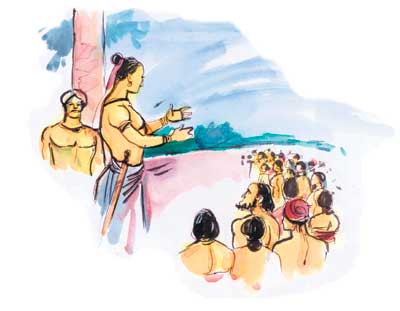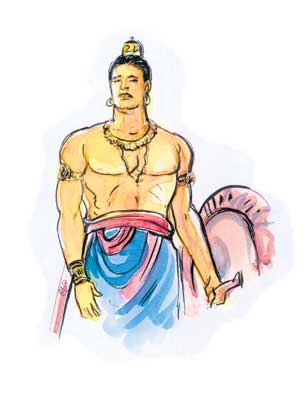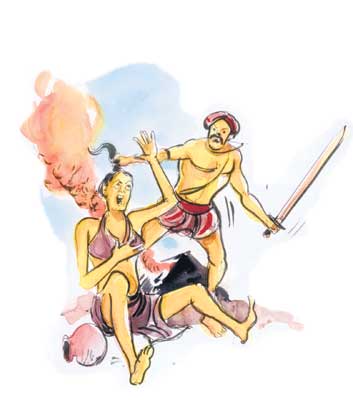
| This article is part of a continuing series on the 'Mahavamsa,' the recorded chronicle of Sri Lankan history The rebellion in the South
1. The families oppressed by the Cholas were harbouring hatred against the foreigner. They were awaiting an opportunity to take revenge. Now they got a leader under whom they could wreak vengeance. The youth of the families that came to Vatagiri, met King Vijayabahu and sought permission to join the army. They were duly enrolled and before long, they became clever soldiers. 2. Meanwhile there arose a rebellion in Ruhuna. The leader of this uprising was the brother of the late Keshadhantu Kashyapa. He wanted to take revenge from Vijayabahu for killing his brother. This incident happened in 1055 AD. Quite a long time had passed after that but he still harboured that grudge and wanted to take revenge. King Vijayabahu too did not want to delay. He took his army and marched to the south. 3. He went and set up camp at Marutalagama. All of a sudden, the rebels came to fight. The king's army attacked them and chased them away. They then went to a place named Ragganaya. They attacked and plundered the villagers and tried to disrupt the administration there. As King Vijayabahu was the ruler of the South, he soon went to the front.
4. As he attacked, the rebels fled the area and retreated to the village of Kumbulgalla. They terrified the villagers there and looted their valuables. The king was very angry at their behaviour. He advanced with his army, with the intention of putting an end to this. He besieged Kimbulgalla, in such a way that no one could escape. Then started the attack. All the rebels were killed but the leader managed to escape. 5. He went and joined the Cholas. King Vijayabahu took the wealth that they had plundered and used it for the maintenance of his army. He stayed there for a few days and later went to Manavula. This place Manavula, situated on the bank of the river Walawe, is also called Mahanagakula. It is from here that the king got organized for his final battle against the Cholas. Here he enrolled a large number of men to his army and gave them a real good training.
6. The year 1070 dawned. About 53 years of Chola rule had been going on. It was in 1017 AD, that the Cholas took Mihindu V as a prisoner and sent him to Bali in South India. From that day, our country was under Chola rule. The Cholas however, could not rule the whole country. They were unable to bring Ruhuna, under their control. 7. They did not exert much influence on 'Maya-Rata’ too. With the rise of Vijayabahu, around 1055 AD, the revival of the Sinhala people began. He first managed to put an end to the cruel rule of the provincial rulers. They, who had been in the practice of oppressing the people, were the first to be dealt with. The king created a peaceful environment for the people to live, independently. 8. The king's attempt to unify Ruhuna, was successful. By the year 1059 AD, Vijayabahu had become the sole ruler of Ruhuna. He made Kataragama the capital of the South. First he became 'Yuvaraja' under the name Vijayabahu. He did not give up the struggle against the Cholas. He had to face both victories and defeats. |
|| Front
Page | News | Editorial | Columns | Sports | Plus | Financial
Times | International | Mirror | TV
Times | Funday
Times|| |
| |
Copyright
2007 Wijeya
Newspapers Ltd.Colombo. Sri Lanka. |


